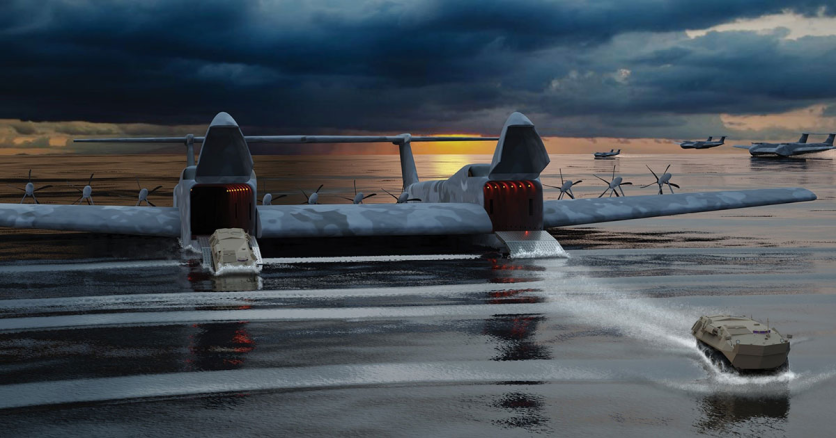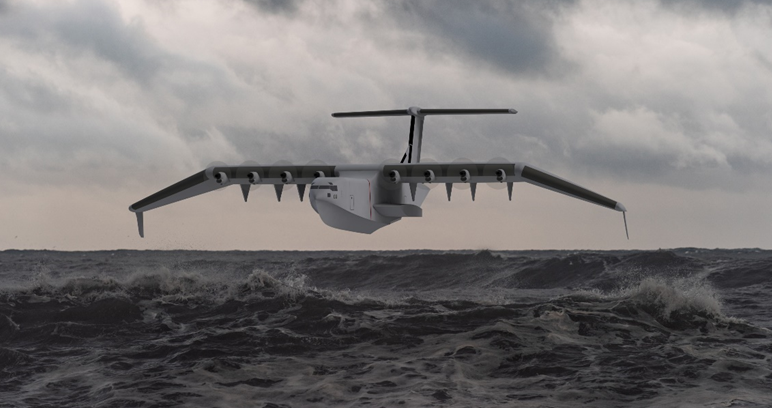The Defense Advanced Projects Research Agency (DARPA) recently selected two teams to create designs for its Liberty Lifter Seaplane Wing-in-Ground Effect full-scale demonstrator, as per a press release on Feb. 1.
The two teams are General Atomics, working with Maritime Applied Physics Corporation, and Aurora Flight Sciences, collaborating with ReconCraft and Gibbs & Cox.

Liberty Lifter Program
The Liberty Lifter program's goal is to design, manufacture, float, and fly a long-range, low-cost X-Plane capable of a seaborne strategic and tactical heavy lift.
A large flying boat with the same size and carrying capacity as the C-17 Globemaster III transport plane will be the Liberty Lifter demonstrator.
The objectives include takeoff and landing in Sea State 4, sustained on-water operation up to Sea State 5, and prolonged ground effect flying close to the ocean.
The ability to fly out of ground effect at heights up to 10,000 feet above sea level is also part of the objectives.
"We are excited to kick off this program and looking forward to working closely with both performer teams as they mature their point-of-departure design concepts through Phase 1," DARPA Liberty Lifter Program manager Christopher Kent said in a statement.
"The two teams have taken distinctly different design approaches that will enable us to explore a relatively large design space during Phase 1."
The General Atomics team decided on the twin-hull, mid-wing design to improve seakeeping and on-water stability. It uses twelve turboshaft engines for dispersed propulsion.

Meanwhile, the point-of-departure design from Aurora Flight Sciences resembles a traditional flying boat with a single hull, a high wing, and eight turboprops for primary propulsion.

Read also : DARPA Successfully Flew a Black Hawk Helicopter using 'ALIAS' without Any Pilot-Self-Flying Missions Soon?
Phase 1
The Liberty Lifter designs will be improved during Phase 1 by DARPA in collaboration with performer teams and Department of Defense partners, paying close attention to operational requirements and operating concepts.
The Phase 1 contract awards have a performance duration of 18 months, with conceptual design work lasting six months, design maturation lasting nine months, and a preliminary design review concluding the process.
The assessments of the manufacturing and demonstration plans will take additional three months, according to DARPA.
With the ongoing comprehensive design, production, and demonstration of a full-scale Liberty Lifter X-Plane, Phase 1 will move into Phase 2 in the middle of 2024.
DARPA plans to collaborate with one or more DoD Services and foreign partners for those initiatives as well as the continued development of the Liberty Lifter concept into an operational vehicle.
In related news, NASA has announced its collaboration with DARPA to build and demonstrate a nuclear thermal rocket for future space missions.
The space agency will take part in DARPA's Demonstration Rocket for Agile Cislunar Operations (DRACO). The nuclear reactor and engine will be built by DARPA and NASA, aiming to test it in space in 2027.
Related Article : World's First 'Warp Bubble' Discovered by Serendipity? DARPA Researchers Find it in Strange Encounter

ⓒ 2025 TECHTIMES.com All rights reserved. Do not reproduce without permission.




